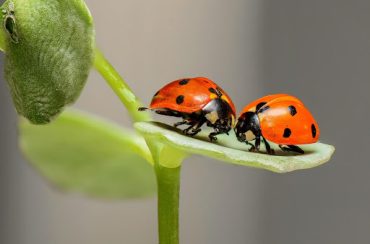

The tiny, multicolored insects known as ladybugs are often seen as a sign of good fortune. Unfortunately, even though ladybugs are harmless, their enormous swarms may be a real pain in the neck if they find their way into your house or garden.
In this post, we will address the benefits and drawbacks of ladybugs and whether they are harmful bugs.
Since they feed on undesirable insects in the garden, such as aphids, mites, and scale insects, ladybugs are often considered helpful insects. These pests may harm plants and crops, but ladybugs can help naturally manage their numbers and prevent damage. So, in addition to being crucial pollinators, ladybugs are also beneficial to the overall condition of your garden.
In addition to their vital function in controlling pests, many people love ladybugs for their dainty and vibrant look. Children like catching them and playing with them, and they are often employed as a decorative element in works of art and design.
Although ladybugs could be helpful in the garden, they can become a nuisance if they get inside your house or your place of work. As a result of their preference for warm, bright environments, ladybugs often seek refuge inside during the cooler months of autumn and winter. They can gain access to dwellings via narrow crevices and gaps, and once inside, they congregate in vast numbers on window sills, walls, and ceilings.
When crushed or otherwise disrupted, ladybugs may leave behind a foul-smelling stink and yellow stains. Nevertheless, ladybugs do not pose a health risk to people. Many ladybugs may occasionally be responsible for damage to upholstered furniture and drapes, among other things in the home.
You may take a few different approaches to control the number of ladybugs if you have an infestation in your house or place of business. Sealing up any gaps or holes that ladybugs may exploit to enter your house is one of the most straightforward measures, and it’s also one of the most successful. This involves caulking cracks or gaps in the foundation or walls, sealing surrounding doors and windows, fixing torn screens, and restoring damaged screens.
In addition, you may use a hoover to remove ladybugs from your house if they have already made their way inside. If you want to stop them from returning, throw away the hoover in the open air. Insecticides can suppress ladybird populations. Still, their application requires extreme care since they pose a threat not just to ladybugs but also to pets and other valuable insects.
The most effective strategy for managing ladybird populations and warding off infestations is pest management via prevention. To stop ladybugs from invading your house, consider the following advice:
In conclusion, ladybugs may be helpful and troublesome depending on where they live and how they behave. Although they are helpful predators in the garden, they may become a nuisance if they get inside your house or place of business. If you take measures to avoid and manage ladybugs infestations, you may get the advantages of ladybirds without suffering from their adverse effects.
In the case of ladybugs, you should seek the services of a qualified pest control firm as soon as possible. They can give treatments that are specific to the problem, as well as guidance on how to avoid repeat infestations. In addition, you and your family can enjoy a clean and pest-free home if you and your other household members work together to achieve this goal.
